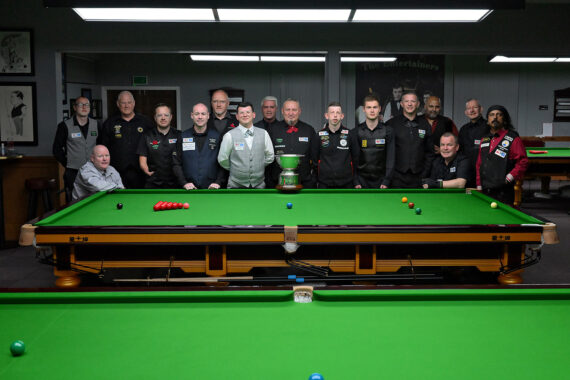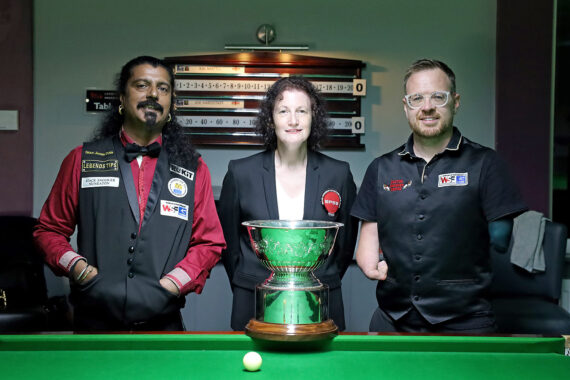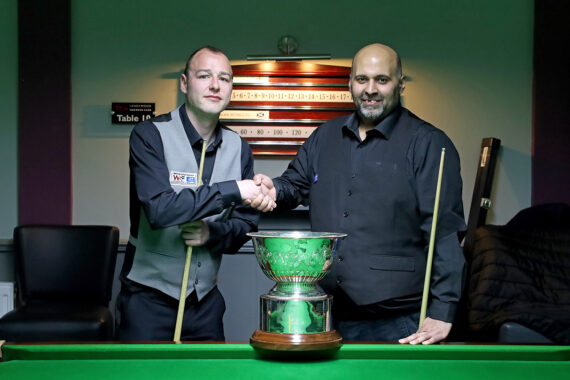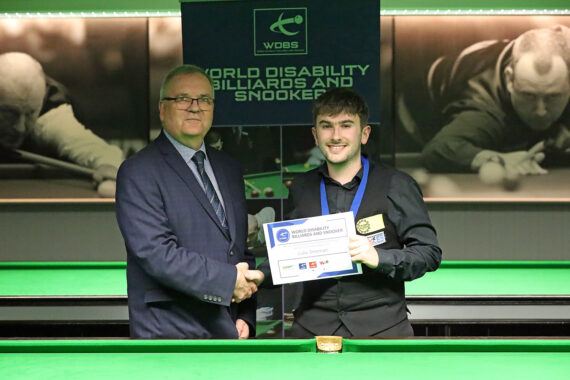WDBS Classification Guide: Group Four
Today we continue to explore the World Disability Billiards and Snooker classification system, used to determine which players are eligible to play in each of our events.
This week we look at the group four profiles, the second of three groups relating to ambulant players who have a physical disability.
- Group one classification explained
- Group two classification explained
- Group three classification explained
WDBS Disability Classification
The WDBS classification system comprises 36 individual profiles, which have then been allocated to eight groups, used to categorise events.
The system has been taken from the English Federation of Disability Sport (EFDS) profile toolkit and revised to suit snooker and billiards.
Group 4 (profiles 14-15, 17-21, 27-28)
Profile 14: Able to walk, but one side of the body is of little use; usually can only balance unaided on the good leg.
Profile 15: Able to walk, but only one side of body is non-affected.
Profile 17: Able to walk, but both legs are severely impaired.
Profile 18: Able to walk, but one leg severely impaired.
Profile 19: Able to walk, one leg severely impaired, other leg less impaired.
Profile 20: Able to walk but both legs impaired slightly.
Profile 21: Both arms are severely impaired or amputated
Profile 27: Opposite arm and leg severely impaired.
Profile 28: Both hips impaired causing walking difficulty.
Group four is the second of three groups for ambulant players (i.e. players who can walk) and is made up of eight disability profiles (15, 17-21 & 27-28), plus the ‘either/or’ profile 14. Players falling under profile 14 with orthosis/appliances will also be classified as group four players.
At WDBS events held to date, group four players have competed together with group five players in competitions. Of the three ambulant groups, players who fall under group four are less affected by their disability than group three players when playing across all groups
Player view
As was the case with group three featured last week, we have already seen a large number of group four players compete in the WDBS events held to date. Winners of the group 4/5 events include World Billiards player Raja Subramanian and the experienced Andy Johnson, while world wheelchair darts champion Ricky Chilton was also involved in Manchester.
Another who made his debut in our second event was Joe Hardstaff, an IT teacher from Boston, Lincolnshire. Born with phocomelia, a rare disability that causes the bones of the arms, and in some cases other appendages, to be extremely shortened and even absent, Hardstaff falls under profile 21 of the WDBS classification system.
Although he has less competitive experience than some of the other players mentioned (the Manchester Classic was his first taste of competition snooker), Hardstaff is no stranger to cuesports having first been introduced when he was approximately 13-years-old:
“My brother and I would go to the snooker club once a week and play snooker and pool,” said Hardstaff. “I then started to play in our local pool league at the age of 16 and have since won many local town competitions. Snooker has been a game that I have played alongside this as a cue practice mechanism as I never classed myself as good enough to join the local snooker league.”
A former football coach whose son now plays for a local academy, Hardstaff learned of the WDBS earlier this year following an enquiry to the WPBSA as to competitive opportunities for people with disabilities. Following his debut in Manchester he is now relishing the prospect of gaining match experience in future tournaments.
“Snooker for me is a love – hate game,” said Hardstaff. “Fortunately I love it more than I hate it! It’s one of those games that when you are playing well it is extremely rewarding and enjoyable to play.
“I would consider myself as an experienced player but with a lot to learn as my competitive side of snooker is a bit lacking. Having played most of my games in a non-competitive, friendly way with family and friends, it’s certainly something that needs a bit of work.
“I can compete with players of a similar skill level but importantly my disability makes very little difference, although you would not perhaps think that when you see me. There are certain barriers that my disability creates such as bridging over balls that are close together, long reaching shots and power shots however this is compensated somewhat in different approaches to shot selection.”
Hardstaff describes his involvement in the Manchester Classic as a real ‘eye-opener’, while he was also one of the players who attended World Disability Snooker Day at the 2016 World Championship.
“I went into the competition with an open mind and I was amazed by the standard of play,” continued Hardstaff. “I met some very nice people who I met again at the World Championship in Sheffield where I attended the disability day to show people what we can do. This I thoroughly enjoyed, particularly the Crucible tour and watching the professionals of course.
“I think the WDBS has a fantastic energy about it. The people who make the organisation operational are very enthusiastic and driven which I really like. They are also very friendly and welcoming. With that kind of focus and vision who knows what’s possible in years to come. Hopefully there will be some sort of Olympics representation of the sports and a wider community of players and playing opportunities.
“I am very pleased to be a part of it and can see myself continuing to compete wherever I can.”
Next week we continue our look at the WDBS classification system as we turn to our group five classification, the third and final ambulant profile.





